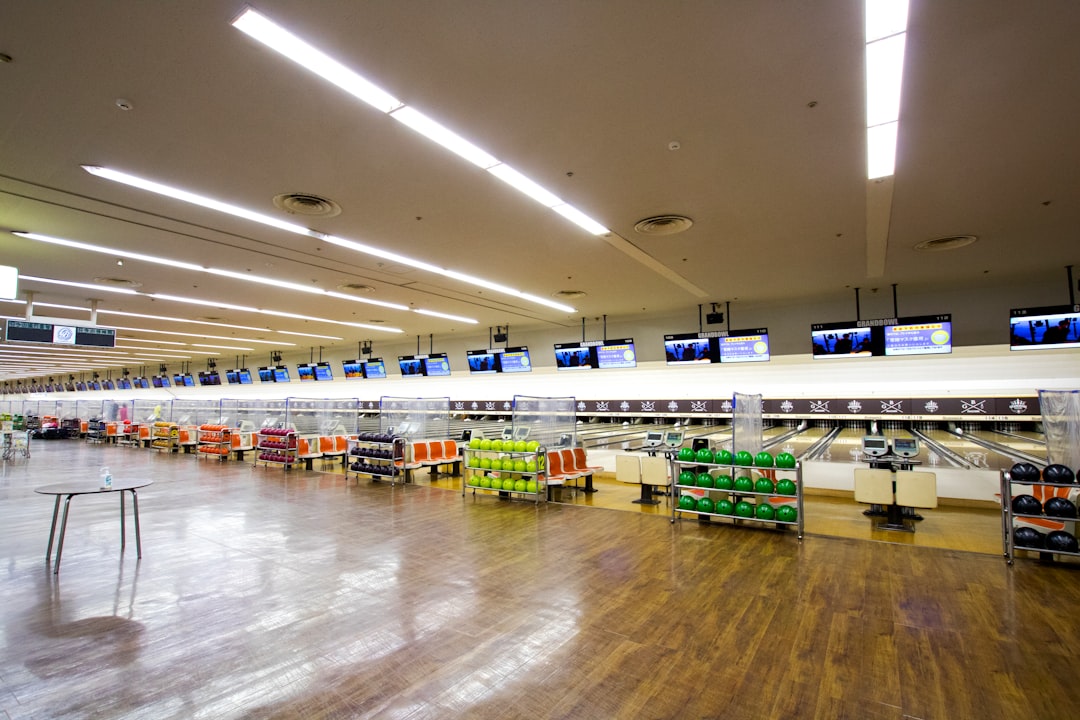As a grocery store owner or manager, you are acutely aware of the razor-thin margins that characterize the retail food industry. Margin protection is not just a financial strategy; it is a vital component of your business’s sustainability and growth. In an environment where competition is fierce and consumer preferences shift rapidly, safeguarding your margins can mean the difference between thriving and merely surviving.
By prioritizing margin protection, you ensure that your store can weather economic fluctuations, invest in improvements, and ultimately provide better service to your customers. Moreover, margin protection allows you to maintain a competitive edge. When you effectively manage your margins, you can offer competitive pricing while still ensuring profitability.
This balance is crucial in attracting and retaining customers who are increasingly price-sensitive. By understanding the importance of margin protection, you position your grocery store not only to survive but to flourish in a challenging market landscape.
Key Takeaways
- Understanding the importance of margin protection in grocery stores is crucial for long-term profitability and sustainability.
- Factors that impact grocery store margins include pricing, inventory management, shrinkage, supplier relationships, and market trends.
- Implementing effective pricing strategies, such as value-based pricing and dynamic pricing, can help protect margins and drive sales.
- Utilizing technology and data analysis tools can provide valuable insights into margin performance and help identify areas for improvement.
- Training staff to reduce shrinkage through proper inventory management and implementing loss prevention measures is essential for protecting margins.
Analyzing the factors that impact grocery store margins
To effectively protect your margins, you must first analyze the various factors that influence them. One of the most significant elements is the cost of goods sold (COGS). This encompasses everything from the price you pay for inventory to shipping and handling costs.
By closely monitoring these expenses, you can identify areas where you might be overspending and take corrective action. For instance, negotiating better terms with suppliers or seeking alternative sources for certain products can help reduce COGS and improve your margins. Another critical factor is operational efficiency.
Your store’s layout, staffing levels, and inventory management practices all play a role in determining how much it costs to run your business. If you find that labor costs are eating into your margins, it may be time to reassess your staffing strategy or invest in training programs that enhance employee productivity. Additionally, understanding customer behavior and shopping patterns can help you optimize store operations, ensuring that you are meeting demand without overstocking or understocking items.
Implementing effective pricing strategies to protect margins

Once you have a clear understanding of the factors impacting your margins, the next step is to implement effective pricing strategies. Pricing is not merely about setting a number; it involves a comprehensive approach that considers market conditions, competitor pricing, and customer perceptions. You might consider employing psychological pricing techniques, such as pricing items just below a whole number (e.g.
99 instead of $5.00), which can make products appear more attractive to consumers.
Additionally, tiered pricing strategies can be beneficial. By offering different price points for similar products—such as premium, mid-range, and budget options—you cater to a broader audience while still protecting your margins. This approach allows you to capture sales from various customer segments without compromising on profitability.
Regularly reviewing and adjusting your pricing strategy based on sales data and market trends will also help ensure that you remain competitive while safeguarding your margins.
Utilizing technology and data analysis to monitor margins
| Metrics | Current Value | Target Value |
|---|---|---|
| Profit Margin | 15% | 20% |
| Cost of Goods Sold | 70% | 65% |
| Revenue Growth | 10% | 15% |
In today’s digital age, leveraging technology and data analysis is essential for effective margin protection. By utilizing point-of-sale systems and inventory management software, you can gain real-time insights into sales trends, inventory levels, and customer preferences. This data enables you to make informed decisions about pricing, promotions, and inventory management, all of which directly impact your margins.
Moreover, advanced analytics tools can help you identify patterns in customer behavior that may affect your margins. For instance, if data shows that certain products sell better during specific times of the year or in response to particular promotions, you can adjust your inventory and marketing strategies accordingly. By harnessing technology and data analysis, you empower yourself to make proactive decisions that protect your margins and enhance overall profitability.
Training staff to reduce shrinkage and protect margins
Your employees play a crucial role in protecting your grocery store’s margins, particularly when it comes to reducing shrinkage—losses due to theft, spoilage, or administrative errors. Investing in comprehensive training programs for your staff can significantly mitigate these risks. Educating employees about the importance of margin protection and how their actions contribute to overall profitability fosters a sense of ownership and accountability.
Additionally, implementing clear policies and procedures regarding inventory management can help minimize shrinkage. Training staff on proper handling techniques for perishable goods can reduce spoilage rates, while regular audits can help identify discrepancies in inventory levels. By creating a culture of vigilance and responsibility among your employees, you not only protect your margins but also enhance the overall efficiency of your operations.
Building strong relationships with suppliers to negotiate better pricing

Establishing strong relationships with suppliers is another critical aspect of margin protection. When you cultivate partnerships based on trust and mutual benefit, you position yourself to negotiate better pricing and terms. Regular communication with suppliers allows you to stay informed about market trends, potential price increases, or new product offerings that could enhance your inventory.
Moreover, consider exploring collaborative opportunities with suppliers, such as joint promotions or exclusive product offerings. These partnerships can lead to cost savings and increased sales while also providing unique value to your customers. By fostering strong supplier relationships, you not only protect your margins but also create a more resilient supply chain that can adapt to changing market conditions.
Managing inventory effectively to minimize waste and maximize margins
Effective inventory management is paramount in protecting your grocery store’s margins. Overstocking leads to increased holding costs and potential spoilage, while understocking can result in lost sales opportunities. Implementing an efficient inventory management system allows you to track stock levels in real-time and make data-driven decisions about reordering.
Consider adopting just-in-time (JIT) inventory practices that align closely with customer demand. This approach minimizes excess stock while ensuring that popular items are always available for purchase. Additionally, regularly reviewing sales data can help you identify slow-moving products that may need markdowns or promotions to clear out inventory before it becomes unsellable.
By managing inventory effectively, you not only reduce waste but also enhance your overall profitability.
Offering promotions and discounts strategically to drive sales without sacrificing margins
Promotions and discounts can be powerful tools for driving sales; however, they must be implemented strategically to avoid eroding your margins. Instead of blanket discounts across all products, consider targeted promotions that focus on high-margin items or seasonal products that need a sales boost. This approach allows you to attract customers while still protecting your bottom line.
This strategy encourages customers to purchase more while maintaining higher overall margins on bundled items. By carefully planning your promotional strategies, you can stimulate sales without compromising the integrity of your margins.
Monitoring and adjusting pricing in response to market trends and competition
The grocery industry is dynamic; therefore, continuous monitoring of market trends and competitor pricing is essential for margin protection. Regularly reviewing competitor prices allows you to remain competitive while ensuring that your own pricing reflects current market conditions. If competitors lower their prices on key items, it may be necessary for you to adjust yours accordingly to retain customer loyalty.
Moreover, staying attuned to broader market trends—such as shifts in consumer preferences towards organic or locally sourced products—can inform your pricing strategy as well. By being proactive in adjusting prices based on market dynamics, you position yourself as a responsive retailer who values customer needs while safeguarding your margins.
Creating a culture of cost-consciousness and margin protection within the organization
To truly protect your grocery store’s margins, it is essential to foster a culture of cost-consciousness throughout the organization. This begins with leadership setting clear expectations regarding margin protection as a priority for all employees. Regularly communicating the importance of maintaining healthy margins helps instill a sense of responsibility among staff members at all levels.
Encouraging employees to share ideas for cost-saving measures or efficiency improvements can also contribute to this culture. When team members feel empowered to contribute to margin protection efforts, they are more likely to take ownership of their roles in achieving overall business goals. By creating an environment where everyone understands their impact on margins, you enhance both employee engagement and financial performance.
Evaluating the success of margin protection strategies and making adjustments as needed
Finally, regularly evaluating the success of your margin protection strategies is crucial for long-term sustainability. Establish key performance indicators (KPIs) related to margin performance and review them consistently to assess whether your strategies are yielding the desired results. If certain approaches are not delivering expected outcomes, be prepared to pivot and explore alternative solutions.
Additionally, soliciting feedback from employees about what is working well—and what isn’t—can provide valuable insights into areas for improvement. By remaining flexible and open to change, you ensure that your grocery store continues to adapt in an ever-evolving marketplace while effectively protecting its margins for future success.
Understanding grocery store margin protection is crucial for maintaining profitability in a highly competitive market. One insightful resource that delves into strategies for safeguarding these margins is an article available on How Wealth Grows. This article provides valuable insights into cost management, pricing strategies, and the importance of supply chain efficiency. For a deeper understanding of these concepts, you can read more about it by visiting this related article.
WATCH NOW! How Algorithms Quietly Bloat Your Grocery Bill; Here’s How to Fight Back
FAQs
What is grocery store margin protection?
Grocery store margin protection refers to the strategies and tactics implemented by grocery store owners and managers to maintain and protect their profit margins in the face of various challenges such as competition, price fluctuations, and changing consumer preferences.
Why is margin protection important for grocery stores?
Margin protection is important for grocery stores because it directly impacts their profitability and sustainability. By safeguarding their profit margins, grocery stores can ensure their financial viability and ability to invest in growth and improvement.
What are some common challenges to grocery store margins?
Common challenges to grocery store margins include price competition from other stores, fluctuating costs of goods, changing consumer demands, and operational inefficiencies.
What are some strategies for protecting grocery store margins?
Strategies for protecting grocery store margins include effective pricing and promotion strategies, efficient inventory management, cost control measures, and investment in technology and automation.
How can grocery store owners and managers monitor and analyze their margins?
Grocery store owners and managers can monitor and analyze their margins by regularly reviewing financial reports, conducting cost and pricing analyses, and utilizing software and tools for margin tracking and forecasting.
What role do suppliers and vendors play in margin protection for grocery stores?
Suppliers and vendors play a crucial role in margin protection for grocery stores by offering competitive pricing, reliable product quality, and cooperative promotional support. Effective partnerships with suppliers and vendors can contribute to improved margins for grocery stores.
